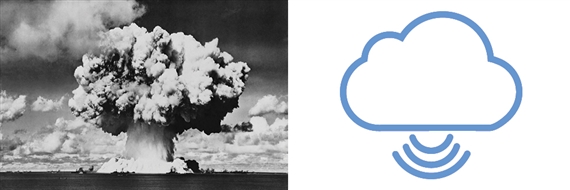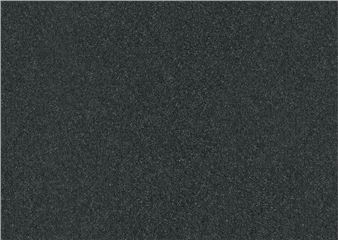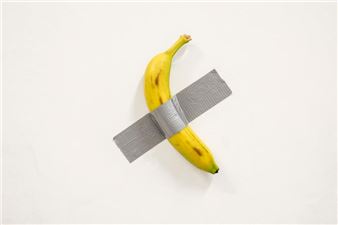Under the Clouds: From Paranoia to the Digital Sublime
Since the second half of the 20th century, we have lived under the shadow of two clouds: the mushroom cloud of the atomic bomb, and the вҖҳcloudвҖҷ of distributed information networks. How did the central metaphor of cold war paranoia become the utopian metaphor of today? вҖҳUnder the CloudsвҖҷ explores the contemporary sublime that has replaced the natural one, and the interrelated effects and affects of these two clouds on life and work, leisure and love, and on images, bodies, and minds.
The post-war technologies of the emergent third industrial revolution have now evolved to fit in the palm of our hand; we no longer merely look at images, we now touch, scroll, pinch, and drag them. Where is the border between the self and its data shadow, between information, matter, and affect? The biological, economic, aesthetic, and political effects of living under the clouds has taken the form of new relations between data and material, as well as increasing debt and abstract financialization; the changing nature of work and sex; and new relationships between screens, images, and things. As earlier forms of technologically inflected art sought to mitigate the effects of change вҖ” both on perception and society вҖ” many of todayвҖҷs artistic practices confront the myriad interfaces and decentralized networks that continue to shape and transform daily life, forming new evolving connections between bits and atoms.

Recommended for you
Since the second half of the 20th century, we have lived under the shadow of two clouds: the mushroom cloud of the atomic bomb, and the вҖҳcloudвҖҷ of distributed information networks. How did the central metaphor of cold war paranoia become the utopian metaphor of today? вҖҳUnder the CloudsвҖҷ explores the contemporary sublime that has replaced the natural one, and the interrelated effects and affects of these two clouds on life and work, leisure and love, and on images, bodies, and minds.
The post-war technologies of the emergent third industrial revolution have now evolved to fit in the palm of our hand; we no longer merely look at images, we now touch, scroll, pinch, and drag them. Where is the border between the self and its data shadow, between information, matter, and affect? The biological, economic, aesthetic, and political effects of living under the clouds has taken the form of new relations between data and material, as well as increasing debt and abstract financialization; the changing nature of work and sex; and new relationships between screens, images, and things. As earlier forms of technologically inflected art sought to mitigate the effects of change вҖ” both on perception and society вҖ” many of todayвҖҷs artistic practices confront the myriad interfaces and decentralized networks that continue to shape and transform daily life, forming new evolving connections between bits and atoms.
Artists on show
- Adel Abdessemed
- Adelhyd van Bender
- Andy Warhol
- Angelo de Sousa
- Anicka Yi
- Anne-Marie Miéville
- Arte Nucleare
- Bruce Conner
- Carla Filipe
- Christopher Williams
- Christopher Wool
- Cory Arcangel
- Darren Bader
- Eduardo Batarda
- Elad Lassry
- Enrico Baj
- Frances Stark
- General Idea
- Gregory Corso
- Guy-Ernest Debord
- Haim Steinbach
- Hans-Peter Feldmann
- Harun Farocki
- Hito Steyerl
- Horst Ademeit
- Jacolby T. Satterwhite
- Jean Tinguely
- Jean-Luc Godard
- Joseph Beuys
- Julie Mehretu
- Kate Cooper
- Katja Novitskova
- Ken Okiishi
- Klaus Peter Brehmer
- Mark Lombardi
- Martha Rosler
- Melanie Gilligan
- Mona Hatoum
- Nam June Paik
- Neil Beloufa
- Pedro Henriques
- Peter Halley
- Prachya Phinthong
- Rachel Harrison
- René Bertholo
- Robert Barry
- Sean Landers
- Seth Price
- Silvestre Pestana
- Stan VanDerBeek
- Thomas Bayrle
- Thomas Hirschhorn
- Thomas Ruff
- Trevor Paglen
- Yves Klein

 ARTISTS
ARTISTS















